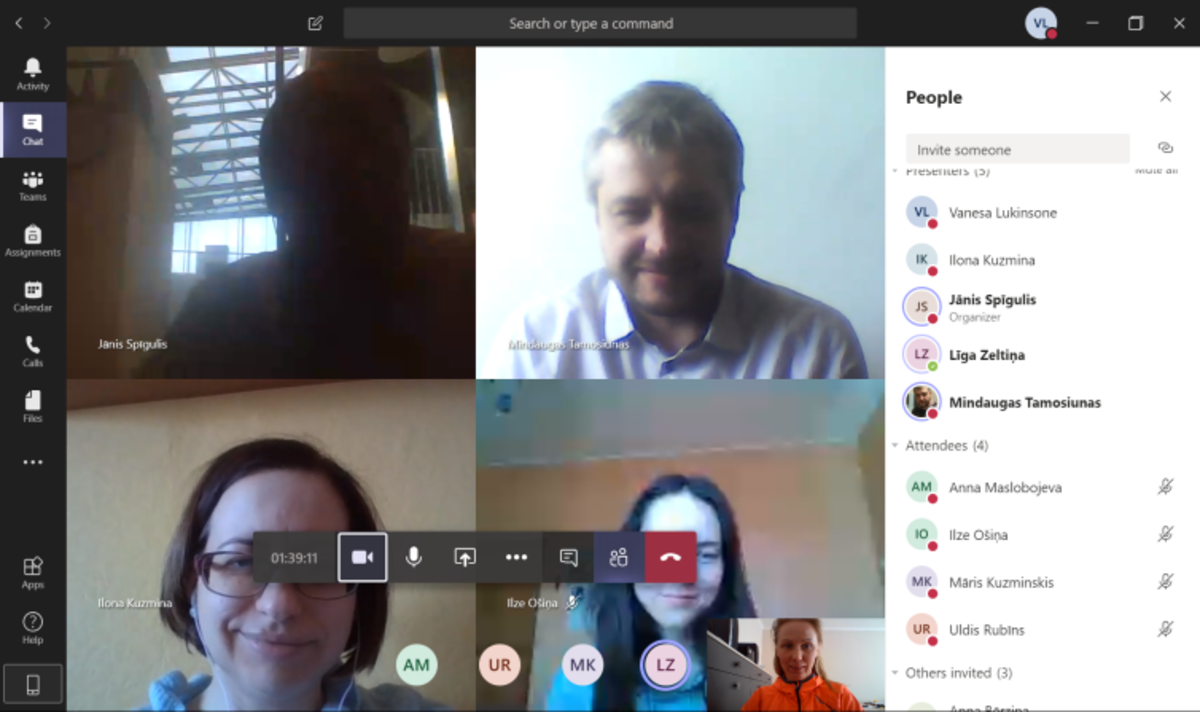
IAPS UL Biophotonics laboratory (head of laboratory - Dr.habil.phys. Jānis Spīgulis) during the state of emergency in March-April, laboratory continues to actively implement the initiated projects, partially reorienting for romote work and replacing the currently impossible clinical measurements of patients with other activities.
-
FLPP project „Photoplethysmography Imaging for Assessment of Chronic Pain” (Nr. lzp-2018/1-0188), research manager - Dr.phys. Andris Grabovskis
Instead of the planned clinical patient examination, IASP laboratory is working on the develompent of the prototype device used for controling of skin microcirculation at different depths. The device consists of 3 monochrome cameras (Ximea-xiQ USB-3.1, ADC 8-12-bit, 648x488) with narrowband interference filters (CW = 420nm, 540nm and 800nm, FWHM = 10nm). During this time, a powerful LED light source has been made containing 6 modules, each with 7 LEDs (Roithner LaserTechnik Gmbh; 4 pcs CW = 420nm, max. Power 4x1W; 1 pc 530nm, CW = 530nm, power 3W; and 2 pcs CW = 800nm, power 0.6W), placed at an angle of 30 degrees to the central axis, making up 15 cm diam. light field 25 cm from the cameras.


After the prototype was assembled, iPPG signal recording tests were performed, and further development of the prototype control software is beeing done remotely. The program simultaneously controls 3 cameras, adaptation of LED light source intensity and synchronous signal recording and analysis.


The Annals of Translational Medicine (IF 3.69) published a discussion (doi: 10.21037 / atm.2020.01.70) by French researchers Olfa Hamzaoui and Rui Shi on an article published by our group in 2019 (Dr. S.Kazune, et al. “Impact of increased mean arterial pressure on skin microcirculatory oxygenation in vasopressor requiring septic patients: an interventional study. ”Ann Intensive Care 2019; 9: 97.), discussing our proposed approach of monitoring high-risk intensive care patients. The editors of the magazine called for a response, and Dr. S.Kazune gave her answer published in March (10.21037 / atm.2020.03.101).
-
ERAF postdoc project “Development of prototype devices for non-invasive skin condition assessment” (1.1.1.2/VIAA/1/16/070), research manager - Dr.phys. Edgars Kviesis-Kipge
During the project we work on the development of non-contact photoplethysmography (iPPG) methods. The plan is to develop and test a compact and easy-to-use contactless photoplethysmography signal recording device, which operates in the infrared range (760 nm). The prototype device consists of 12 infrared LEDs connected in six groups of two diodes each. In March-April, various surface mounting LEDs were studied, as a result Roithner LaserTechnik 400mW radiation power was selected. The electronic circuit of the device with an intensity controler of the LEDs has been created. Different LED current regulators have been researched and a 1500mA high-efficiency voltage-reducing regulator from Texas Instruments has been selected. Testing the basic principles of the technology, the laboratory developed a simplified model of the device, which in April was tested and created the first images of the microcirculation of the wrist circulation.

At the same time, scientists use the newly created opportunities to participate in various online activities, including international conferences:
Four papers were successfully presented at the SPIE Photonics Europe 2020 Digital Forum (April 6-10):
- Laser speckle time-series correlation analysis for bacteria activity detection, authors - Ilya Balmages, Dmitrijs Bliznuks, Janis Liepins, Stivens Zolins, Alexey Lihachev (https://spie.org/EPE/conferencedetails/biomedical-spectroscopy-microscopy-imaging)
- Use of machine learning approaches to improve non-invasive skin melanoma diagnostic method in spectral range 450 - 950nm, authors - Andrey Bondarenko, Yuriy Chizhov, Dilshat Uteshev, Dmitrijs Bliznuks, Alexey Lihachev, Ilze Lihacova ( https://spie.org/EPE/conferencedetails/optics-photonics-digital-technologies-multimedia-applications )
- Agar-based phantoms for skin diagnostic imaging, authors - Ilona Kuzmina, Vanesa Lukinsone, Uldis Rubins, Ilze Osina, Laura Dambite, Anna Maslobojeva, Janis Spigulis, Proc. SPIE 11363, Tissue Optics and Photonics, 113630F (2 April 2020); doi: 10.1117/12.2555674 (published 06.04.2020.)
- Remitted photon path length in human skin, skin phantoms and cell cultures, authors - Vanesa Lukinsone, Ilona Kuzmina, Mindaugas Tamosiunas, Anna Maslobojeva, Maris Kuzminskis, Uldis Rubins, Janis Spigulis, Proc. SPIE 11363, Tissue Optics and Photonics, 1136320 (2 April 2020); doi: 10.1117/12.2555822 (published 06.04.2020.)
Also at the virtual OSA-Biomed conference on April 22, a report was presented:
- Skin-remitted photon path lengths: experimental study, authors - J. Spigulis, V. Lukinsone, U. Rubins, A. Maslobojeva, and M. Kuzminskis, in Biophotonics Congress: Biomedical Optics 2020 (Translational, Microscopy, OCT, OTS, BRAIN), OSA Technical Digest (Optical Society of America, 2020), paper JW3A.1, https://www.osapublishing.org/abstract.cfm?uri=translational-2020-JW3A.1&Site=osac
It should also be noted that on April 15, an article was accepted for publication in the Q1 magazine Biomedical Optics Express:
- V.Lukinsone, A.Maslobojeva, U.Rubins, M.Kuzminskis, M.Osis, J.Spigulis, “Remitted photon path lengths in human skin: in-vivo measurement data”, Biomed.Opt.Expr., https://doi.org/10.1364/BOE.388349 (2020).
To maintain productive and organized laboratory work, scientists met regularly online. Meetings take place both within the framework of projects, to discuss results and progress, and to plan the laboratory's future activities, adapting to the current situation.


 Academic Centre
Academic Centre